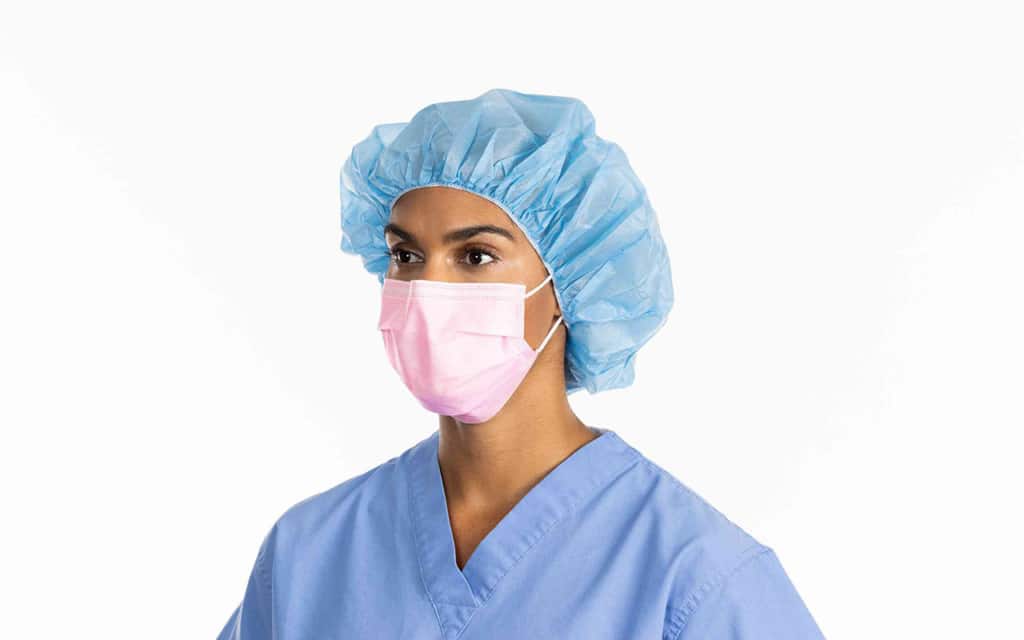Healthcare facilities continue to grapple with the unpredictable demand for masks and face shields, even two years after the world first started talking about COVID-19.
Now, more forward-thinking healthcare organizations are becoming even savvier about personal protective equipment (PPE) in order to remain vigilant against emerging pathogens and combat growing cost pressures stemming from supplier surge pricing.
The Continued Need for Facial Protection
PPE is a year-round need and healthcare organizations reviewing their facial protection inventory should be aware of guidelines surrounding masks that have been established pre-pandemic up until to now. Some may be surprised to discover their current inventory is not what they thought it to be. Others may realize the ASTM protection levels now do not align with clinical formularies updated throughout the COVID-19 pandemic or that stockpiles are filled with non-NIOSH approved or non-FDA cleared masks that no longer meet the updated and current regulatory guidance.
Although experts say COVID-19 case trends reduce during the summer, COVID-19 variants and other emerging pathogens pose ongoing concerns. Take fall and winter for instance. This time of year is historically known as ‘traditional respiratory season’ with a general increased need for facial protection use due to the flu and virus transmission, especially from those who are not vaccinated against them. Hospitals and healthcare systems that fail to invest in inventory that meets the proper facial protection regulations are likely to face shortages when they need PPE the most.
Flu is just one factor facilities must prepare for. That’s why it’s critical to have product on hand that meets the need for additional protection precautions for roles across facilities. Considerations include bacterial filtration, breathability, and splash protection, in addition to the setting in which and on whom the facial protection will be worn. Today, clinicians aren’t the only groups wearing facial protection. Organizations must now think about the needs of patients, visitors, maintenance and administrative teams.
Reviewing Supplier Partnerships
Lack of necessary product on hand can lead to unhappy departments and have an ancillary impact on hospital finances and profits. Mitigating against supply disruption by working with experienced and trusted suppliers helps reduce the financial strain that can result from purchasing products that do not meet regulations or that are purchased on an as-needed basis. Both routes may lead to an increase of hospital spend on sourcing if purchasing outside of known GPO contracted pricing or with volatile shipping expenses from unknown suppliers. Some hospitals have reported being sold counterfeit product or never receiving product that was ordered, which further exacerbates hospital budgetary constraints.
Having an established relationship with a trusted supplier ensures greater predictability of pricing and supply. Identifying suppliers who can be relied upon to supply quality products that meet FDA regulations results in improved internal customer satisfaction and safety. This approach can help clinicians have what they need, when they need it most, so they can do their jobs safely while complying with regulatory agencies.
One way to stay ahead of inventory challenges is to review product usage during the traditional flu season of 2019 as compared to product usage during the height of COVID-19. This can help create a reference bracket to gauge product need for the fall and winter. However, while this is the initial bracket to provide parameters on usage, it is important to consider any new standardization initiatives or protocol changes as supply chain focuses on purchases for the upcoming season.
Preparing Your Stockpile
The need for proper facial protection cannot be overlooked, especially with the potential for new COVID-19 variants, new pathogens crossing borders and with traditional spikes in airborne respiratory viruses that are seen during flu season. Now is a great time for hospitals and health providers to review their facial protection products on hand and have conversations with suppliers to lock in their product needs.
If you find yourself reexamining your stockpile and PPE needs, there are a few questions to keep in mind:
- Do you have enough stockpile on hand as we prepare for flu season or face new or emerging pathogens?
- Is your stockpile made up of the right facial protection?
- Does your stockpile have the right protection level mix to meet the needs of your staff?
- If COVID-19 or respiratory season surges, what is your plan to secure additional inventory?
- Is your supplier reputable and familiar with all regulatory requirements?
- Are you partnered with a manufacturer with a reliable supply chain?



